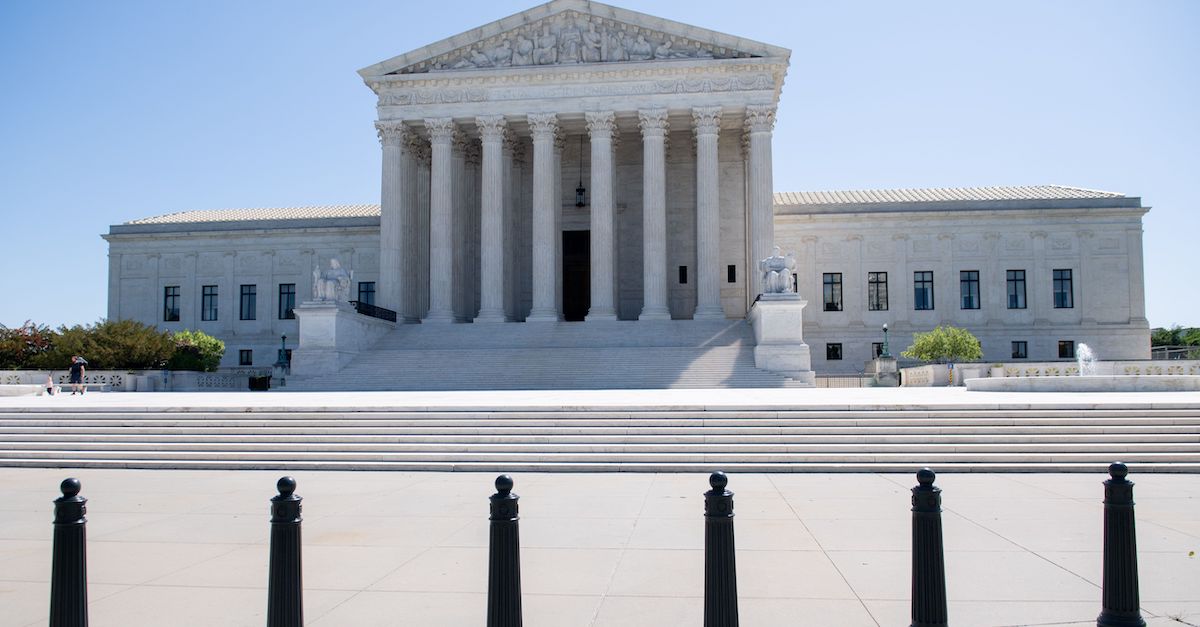
The U.S. Supreme Court heard oral arguments on Monday in an immigration case about whether the government must provide relevant information in one statutory notice or whether inadequate notice can be cured by sending multiple documents over time. Those arguments did not appear to go well for the time-limited Trump administration.
Niz-Chavez v. Barr concerns the fate of Agusto Niz-Chavez, a Guatemalan national who first arrived in the United States in 2005.
In 2013, Niz-Chavez received his first notice to appear in immigration court due to his undocumented status. But, the petitioner’s attorneys argue, the original notice did not contain the requisite time and date information they maintain is required by federal law.
Far from a picayune issue, the lack of time and date information on the original notice could have stark implications for whether or not Niz-Chavez and thousands of other similarly-situated immigrants might be able to remain in the United States.
Under 8 U.S.C. § 1229(b), certain undocumented immigrants may have deportation cases canceled if they have been “physically present in the United States for a continuous period of not less than 10 years immediately preceding the date of such application.”
That residency period, however, can be interrupted by the government by way of the so-called “stop-time” rule which pauses the accrual of time. The rule, contained at 8 U.S.C. §1229 (a), says: “written notice … shall be given in person to the alien … specifying … [t]he time and place at which the proceedings will be held.”
The government believes that notice should be allowed to be given across several separate pieces of paper in instances where the original notice lacks “time and place” information and that the overarching statute lacks clarity. The undocumented immigrant petitioner argues that effective notice must be contained in the original notice and that the statute is clear and obvious here.
The high court appeared somewhat skeptical of the government’s position on Monday morning.
Assistant to the Solicitor General Anthony Yang largely stuck to arguments that Niz-Chavez was asking for the U.S. government to do something that was logistically nightmarish.
Justice Stephen Breyer at one point appeared to empathize with the argument that the government thinks sending effective notice the first time is hard but quickly dismissed that by asking why the government couldn’t just stick to the text of the statute.
Yang replied by disputing Breyer’s efforts at statutory interpretation. The government attorney argued that the statute, which is unclear, is “a typical way to refer to written singular terms.” The liberal justice, for his part, did not appear receptive to that argument.
Conservative Justice Clarence Thomas also made an effort to box in the government, asking Yang at one point whether any other agency in the government has a mandate to send “a notice” by using “six or seven notices.” Yang appeared a bit flummoxed and couldn’t cite a single agency–instead settling on saying that there is no statutory bar to sending multiple notices but that real-world considerations would typically preclude against that. Yang did later admit, however, that ten distinct notices were sent in Niz-Chavez’s case.
Justice Elena Kagan also went after the government for their apparently lax attention to the text of the statute.
Telling the government attorney she thought his interpretation of the statute was flat-out “wrong,” Kagan went on to say “we get a pretty clear answer on the stop-time rule,” simply by plugging in the definitions from one part of the statute to the other. Yang pushed back on this interpretation by telling the justice she got the interpretation “exactly backwards” and by claiming that even the petitioner’s own attorneys weren’t making that argument.
“Whatever petitioner is arguing, that’s the right way to read this definition,” Kagan said at one point–all-but cutting Yang off. “I think it’s pretty clear.”
Liberal Justice Sonia Sotomayor didn’t much credit the government’s position on the meaning of the text either.
At one point, she upbraided Yang by telling him that the government gets the benefit the statute confers against the undocumented immigrant only if the notice contains the statutorily-mandated information. She went on to explain that the logic of sending multiple notices “at some point doesn’t make much sense” to the person who receives them. Sotomayor went on to note that this onslaught of paperwork is particularly damaging in terms of the stop-time rule because it would be particularly unclear and unfair to send multiple notices that confuse when the rule actually takes effect.
Justice Neil Gorsuch, for his part, appeared to be completely annoyed that the high court was even taking up the issue.
Framing his concerns as a question, the apparent heir to Antonin Scalia’s mantle asked why the government was “even pursuing all this” in light of an eight-justice majority in a similar case. The ruling in that case, stylized as Pereira v. Sessions, found that the government cannot provide a defective, or inaccurate, notice in order to trigger the stop-time rule and therefore pause the accrual of time for eligibility to apply for deportation proceedings to be cancelled.
“The government doesn’t have to argue every jot and tittle of a statute,” Gorsuch said, almost sighing. “It has discretion here.”
Newly-minted Justice Amy Coney Barrett was something of a mixed bag. At one point, she posited that the petitioner’s interpretation of the rule might, under certain circumstances, be worse for undocumented immigrants but later on appeared hesitant to credit the government’s position that logistical constraints worked against immigration agencies–or immigration courts for that matter–being able to deliver mandated information correctly the first time around.
Chief Justice John Roberts, and Justices Samuel Alito and Brett Kavanaugh appeared least likely to have tipped their hands during Monday’s session–mostly sticking to questions regarding administrative capacity, the upshot of the ruling and tangential points of law.
[image via Photo by SAUL LOEB/AFP via Getty Images]